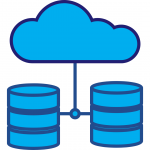Scientific Computing and Data
Partnering with researchers to advance scientific discovery

Get Started
Led by Dean for Scientific Computing Patricia Kovatch, the Scientific Computing team partners with researchers to advance science by providing tools, resources, and assistance to researchers across institutions around the globe.
Advance your Science
Utilize our services to facilitate your research, data, or compute power.

High Performance Computing
The primary asset for Scientific Computing is the supercomputer Minerva. The HPC resource, upgraded in 2021, utilizes
- 24,214 Intel Platinum in three generations (48 cores or 64 cores per node with two sockets in each node)
- 92 nodes with 1.5TB of memory per node, 210 terabytes of total memory
- 350 terabytes of solid-state storage and nearly 32 petabytes of spinning storage accessed via IBM’s Spectrum Scale/General Parallel File System (GPFS)
- a total of 2 petaflops of compute power
Minerva has contributed to over 1,200 peer-reviewed publications in 7 years.

Research Data Services
We partner with scientists to conduct their research via independent data collection, capture, and analysis.
- eRAP is a web-based interactive tool for data entry and reporting. Custom databases are rapidly developed for longitudinal single and multi-site studies.
- REDCap is a secure web application for building and managing online surveys and databases. Track data manipulation, user activity, export procedures, scheduling, calendaring, and branching logic.
- Data Ark utilizes FAIR principles to provide regularly-updated high-quality data sets for reusability in research.
All applications are HIPAA compliant.

Mount Sinai Data Warehouse
The Mount Sinai Data Warehouse provides researchers access to data on over 11 million patient records in the Mount Sinai Health System Epic Electronic Health Record (EHR).
- In total there are over 87 million patient encounters recorded in Epic
- The MSDW ecosystem is Epic and OMOP-centric
- Clinical data is extracted from the Epic Caboodle and Clarity databases, transformed to the OMOP Common Data Model (CDM)
- Data is located on the Minerva High Performance Computing cluster
Request your own custom data set or utilize self-service query tools to search the data.
Supported by grant UL1TR004419 from the National Center for Advancing Translational Sciences, National Institutes of Health.

